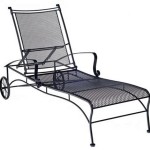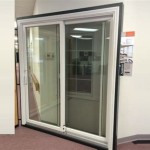How to Remove a Glass Patio Table Top: A Comprehensive Guide
Removing a glass patio table top can be a necessary task for various reasons, including relocation, repair, replacement, or simply for winter storage. While glass tabletops offer aesthetic appeal and are relatively easy to clean, their weight and fragility demand careful handling during removal. Improper methods can result in breakage, potentially causing injuries. This guide provides a detailed, step-by-step approach to removing a glass patio table top safely and efficiently.
Before commencing the process, it is crucial to assess the type of table, the method used to secure the glass, and the availability of necessary tools and assistance. Different table designs employ varying attachment mechanisms, ranging from simple rubber bumpers to more complex clamping systems. Understanding these details is paramount for a successful removal.
Preparation and Safety Precautions
Prioritizing safety is non-negotiable when handling glass. Adequate preparation minimizes the risk of accidents and ensures a smooth removal process. Key aspects of preparation include selecting a suitable workspace, gathering essential tools, and implementing safety measures.
The designated workspace should be a flat, stable surface free from obstructions. Ideally, this area should be large enough to accommodate the entire tabletop without causing it to overhang precariously. A garage floor, a patio area covered with drop cloths, or a cleared section of lawn can serve as appropriate workspaces. Avoid working on uneven surfaces, as they can create stress points on the glass and increase the risk of breakage.
Essential tools for removing a glass patio table top include:
- Work Gloves: Provide a secure grip and protect hands from sharp edges. Industrial work gloves made of leather or a thick synthetic material are recommended.
- Safety Glasses: Shield eyes from potential glass shards.
- Moving Blankets or Thick Padding: Protect the tabletop from scratches and impacts during handling and storage.
- Screwdriver Set: Suitable for removing screws or bolts securing the glass to the frame. Ensure the set includes various sizes and types (Phillips head, flathead, etc.) to match the fasteners used in the table's construction.
- Putty Knife or Flat Pry Bar: Useful for gently separating glass that is adhered to the frame with rubber bumpers or adhesive.
- Suction Cups (Heavy-Duty): Provide a secure grip on the glass surface, aiding in lifting and maneuvering. Choose suction cups specifically designed for handling glass and capable of supporting the tabletop's weight.
- Helper (Optional but Recommended): An extra pair of hands makes the process significantly easier and safer, especially for large or heavy glass tabletops.
Additional safety measures include wearing appropriate clothing, such as long sleeves and pants, to minimize skin exposure. If the tabletop is cracked or damaged, apply packing tape to the damaged areas to prevent further fragmentation. Clearly mark the workspace to alert others and prevent accidental contact with the glass.
Identifying the Attachment Mechanism
Before attempting to remove the glass, carefully examine how it is attached to the table frame. Common attachment methods include:
- Rubber Bumpers: Small rubber or plastic pads positioned between the glass and the frame. These bumpers provide cushioning and prevent the glass from slipping.
- Suction Cups: Similar to rubber bumpers but designed to create a vacuum seal for stronger adhesion.
- Clamps or Brackets: Metal brackets or clamps that secure the glass around its perimeter. These may be attached with screws or bolts.
- Adhesive: The glass may be glued directly to the frame with a strong adhesive. This is less common but can occur, especially in older tables.
- Recessed Frame: The glass sits within a groove or recess in the table frame, relying on its weight and the frame's design for stability.
The attachment method dictates the appropriate removal technique. Attempting to force the glass without understanding the attachment can damage the glass or the frame.
Removing the Glass: Step-by-Step Procedures
Once the attachment mechanism has been identified and preparations are complete, proceed with the following steps, adapting the procedure based on the specific table design.
1. Rubber Bumpers or Suction Cups:
If the glass is held in place by rubber bumpers or suction cups, the removal process is relatively straightforward. Begin by gently lifting one edge of the glass. A putty knife or thin pry bar can be used to carefully separate the glass from the bumpers. Insert the tool between the glass and the frame, applying gentle pressure to release the adhesion. Work around the perimeter of the table, gradually lifting the glass. If suction cups are present, carefully detach them one by one by gently prying them away from the glass or frame. With the assistance of a helper, lift the glass straight up and away from the frame. Avoid tilting or twisting the glass, as this can concentrate stress on the edges.
2. Clamps or Brackets:
If the glass is secured with clamps or brackets, locate the screws or bolts that attach them to the frame. Using the appropriate screwdriver or wrench, loosen and remove the fasteners. Keep the fasteners in a container to avoid losing them. Once all the fasteners have been removed, carefully detach the clamps or brackets from the glass. With the clamps removed, the glass should be free to lift off the frame. Use suction cups to get a secure grip on either side, working with someone to lift the glass straight up and away from the frame.
3. Adhesive:
Removing glass that is adhered to the frame can be more challenging. The first step is to assess the type of adhesive used. If the adhesive is relatively weak, it may be possible to gently pry the glass away from the frame using a putty knife. Insert the putty knife between the glass and the frame, applying gentle pressure to separate the surfaces. Work slowly and carefully, avoiding excessive force. If the adhesive is strong, applying heat may help to soften it. A heat gun or hairdryer can be used to warm the adhesive around the perimeter of the glass. Be careful not to overheat the glass, as this can cause it to crack. Once the adhesive is softened, try prying the glass away from the frame again. If the glass remains stubbornly attached, it may be necessary to use a specialized adhesive remover. Apply the remover according to the manufacturer's instructions, and allow it to penetrate the adhesive before attempting to remove the glass. If the adhesive removal proves extremely difficult, seek professional assistance from a glass repair or furniture restoration specialist.
4. Recessed Frame:
For tables with a recessed frame, the removal process typically involves lifting the glass straight up and out of the recess. Ensure that the tabletop is clean and dry before attempting to lift it. Use suction cups to get a secure grip on the glass. Coordinate with your helper and lift directly upwards without any tilting or twisting. If the glass is stuck, gently tap the frame from underneath, using a rubber mallet or a block of wood to avoid damage, to help loosen the glass. Ensure the area is clear and ready to receive the glass before completely removing it.
Handling and Storage
Once the glass has been removed from the frame, it must be handled and stored properly to prevent damage. Always carry the glass upright, with the edges supported. Avoid carrying it flat, as this can put stress on the center and increase the risk of breakage. Use moving blankets or thick padding to protect the glass from scratches and impacts during transport. Store the glass in a safe, secure location where it will not be accidentally bumped or knocked over. A leaning storage position is preferential to flat storage, as this better distributes the weight. Ideally, the storage area should be climate-controlled to prevent temperature fluctuations, which can cause the glass to expand and contract, potentially leading to cracks. If the glass is being stored for an extended period, consider wrapping it in plastic to protect it from dust and moisture.
Inspect the frame of the patio table after removing the glass. Clean any debris or residue from the frame and make any necessary repairs. Store the frame in a dry location to prevent rust or corrosion.
Carefully dispose of any broken glass. Wrap the broken pieces in heavy paper or cardboard and seal them with tape. Label the package clearly to indicate that it contains broken glass. Dispose of the package in accordance with local regulations.
While removing a glass patio tabletop can often be manageable as a do-it-yourself project, certain situations may necessitate professional assistance. This is particularly true for exceptionally large or heavy tabletops, tables with complex attachment mechanisms, or cases where the glass is damaged or bonded with strong adhesives. Engaging a professional ensures the task is completed safely and efficiently, mitigating the risks of injury or damage to the table.

Cleaning The Glass Top On A Patio Table Dallas Fort Worth Dfw Tx

How To Patio Table Makeover

How To Remove The Glass From A Cocktail Table Ward Iii

How To Remove Rust From Glass Table Top And Spray Paint Patio Furniture Painted Makeover

Goorabbit Outdoor Table With Umbrella Hole Round Tempered Glass Patio Metal Frame Dining All Weather Outside For Garden 31 5x31 5x28 3 Black Com

How To Clean Outdoor Tabletop Stains Glass Com

How To Secure A Glass Table Top Base

Glass Table Top Replacement Services D S Service

Tile Top Patio Table Makeover Chica And Jo

Tile Top Patio Table Makeover Chica And Jo
Related Posts








